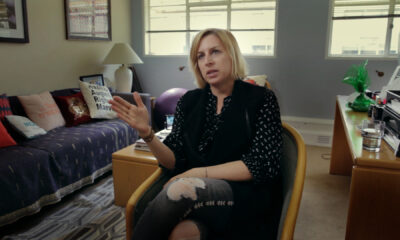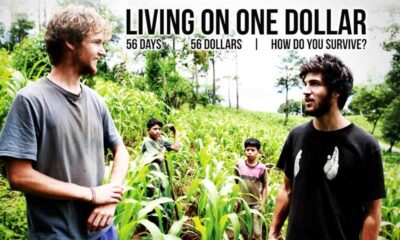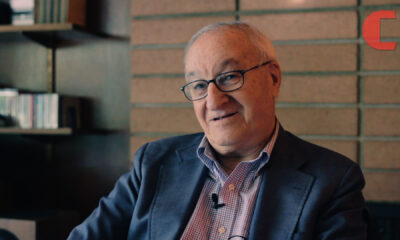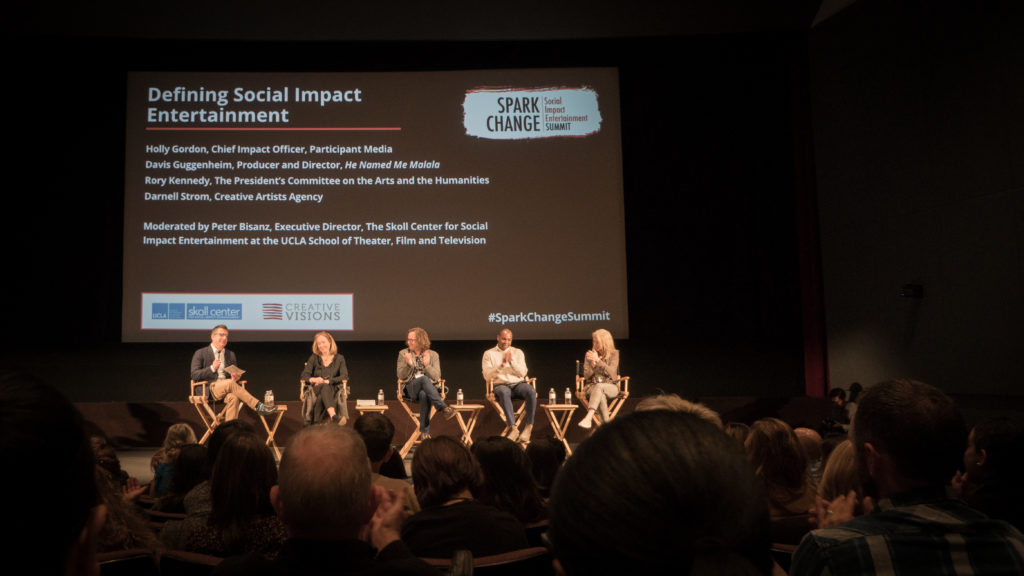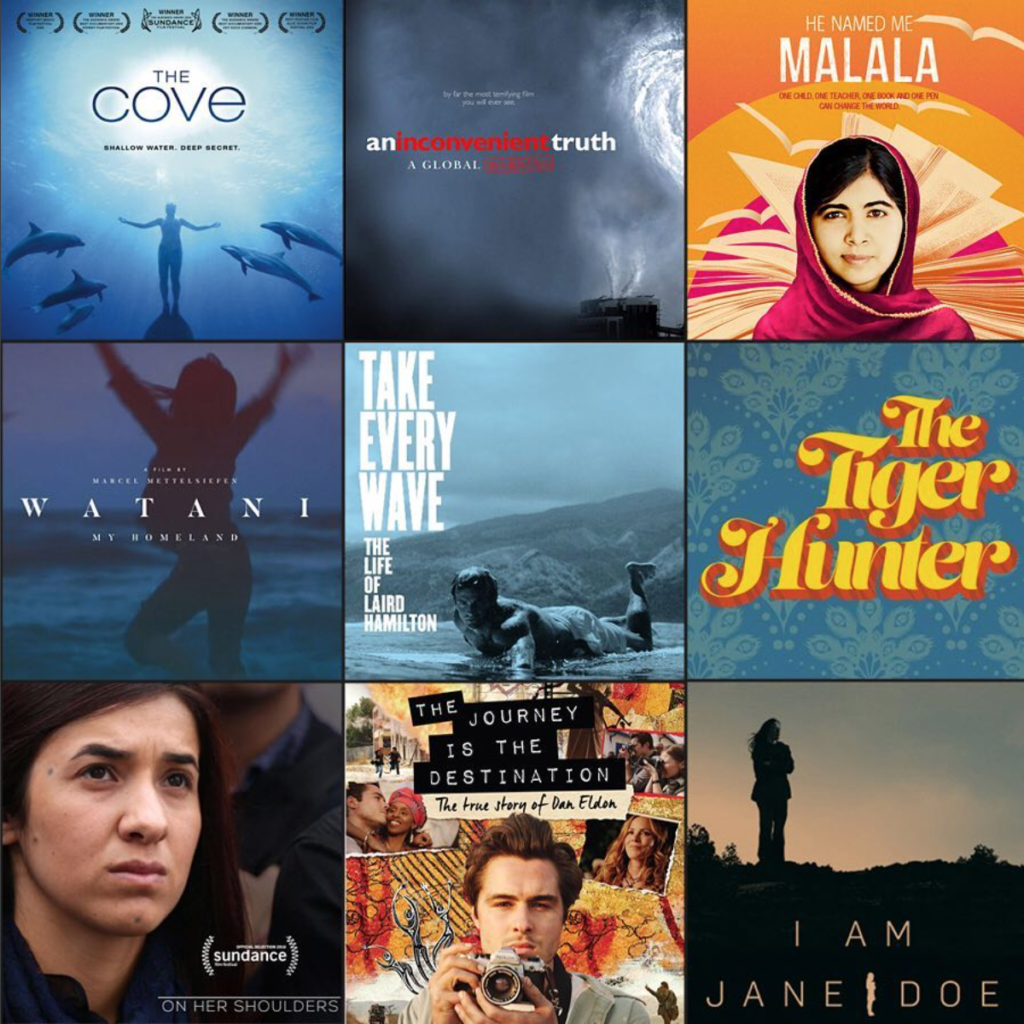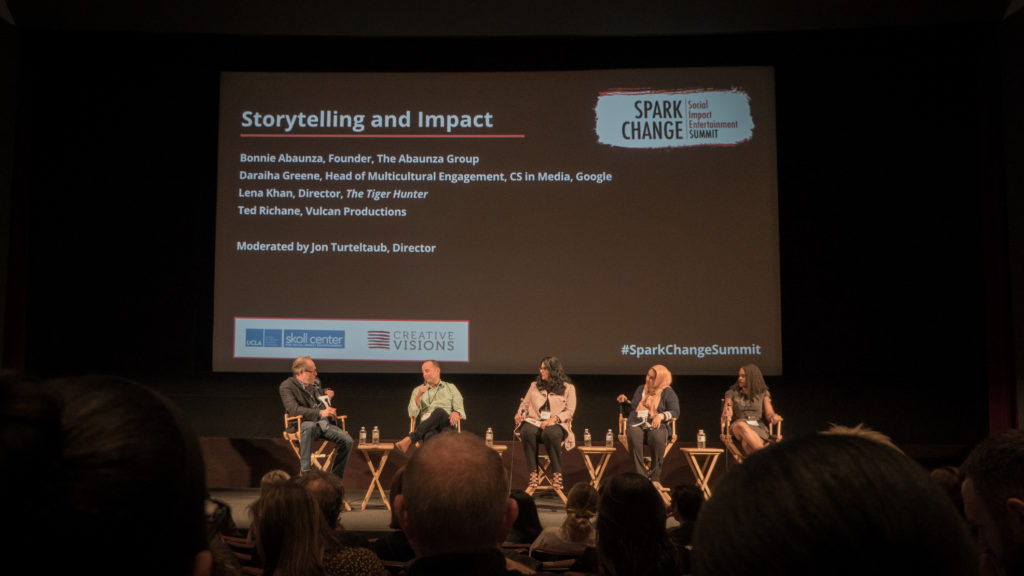Companies
Empowering Social Storytellers: Courtney Spence
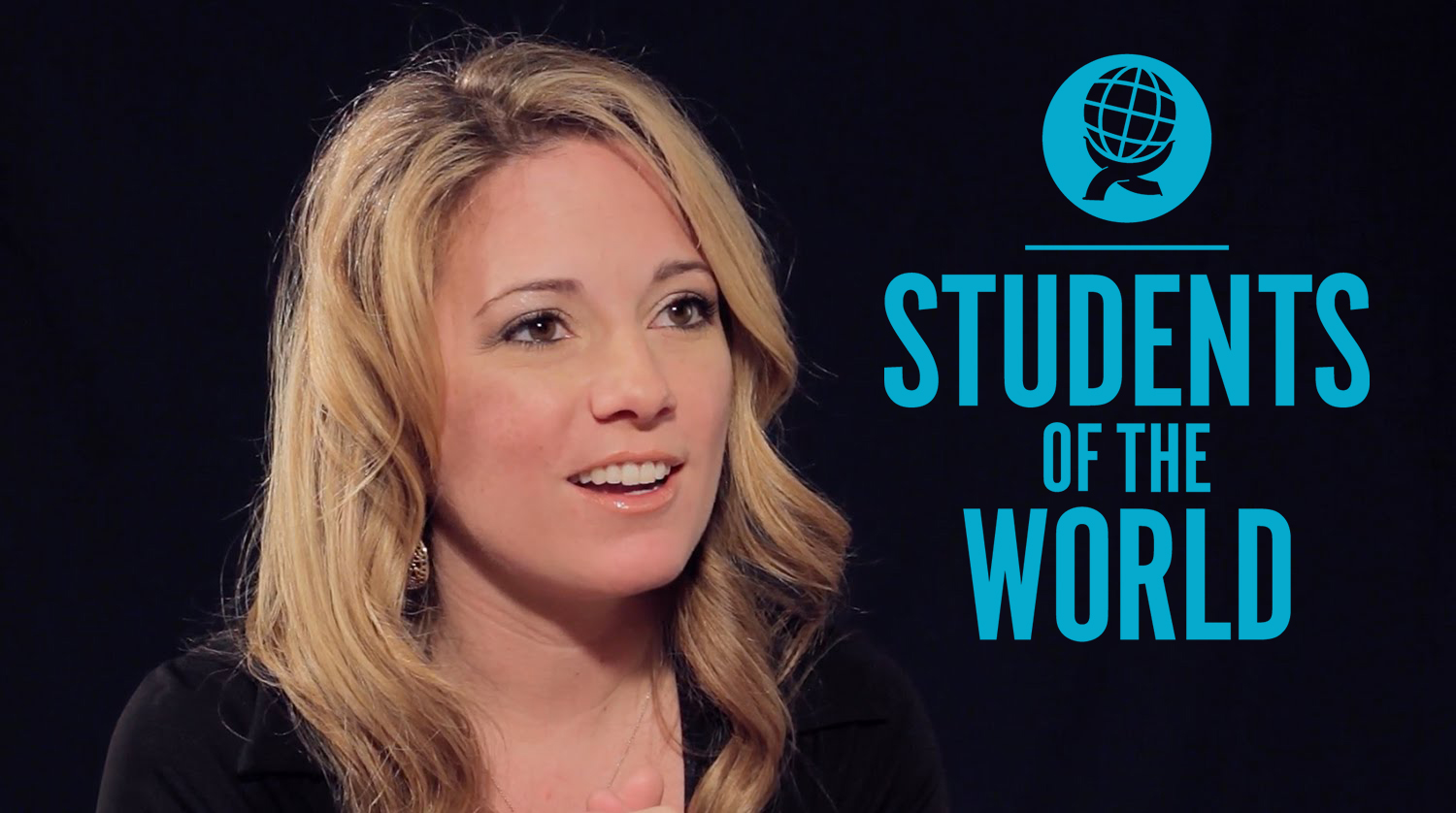
- 00:27 – Intro: Social Storytellers
- 01:39 – What to do with your potential?
- 06:44 – Why create an organization that empowers filmmakers?
- 08:52 – Don’t wait until you’re powerful later – do it now
- 10:21 – How to deal with cynics and criticism
- 13:57 – How to make your nonprofit survive financially
- 16:37 – The Evolution of your own Impact
- 19:24 – How has the Impact landscape changed over the last 10 years
- 23:53 – How can we use Universities as breeding ground for Social Change Media?
- 29:39 – What makes Cinema so powerful and transformative?
- 31:39 – How can film help us reflect and learn?
- 34:58 – A decade of tips for starting your own film nonprofit
- 39:19 – Be financially wise with your nonprofit
- 41:18 – Outro
Companies
Aging and Nuclear War in the Writers’ Room
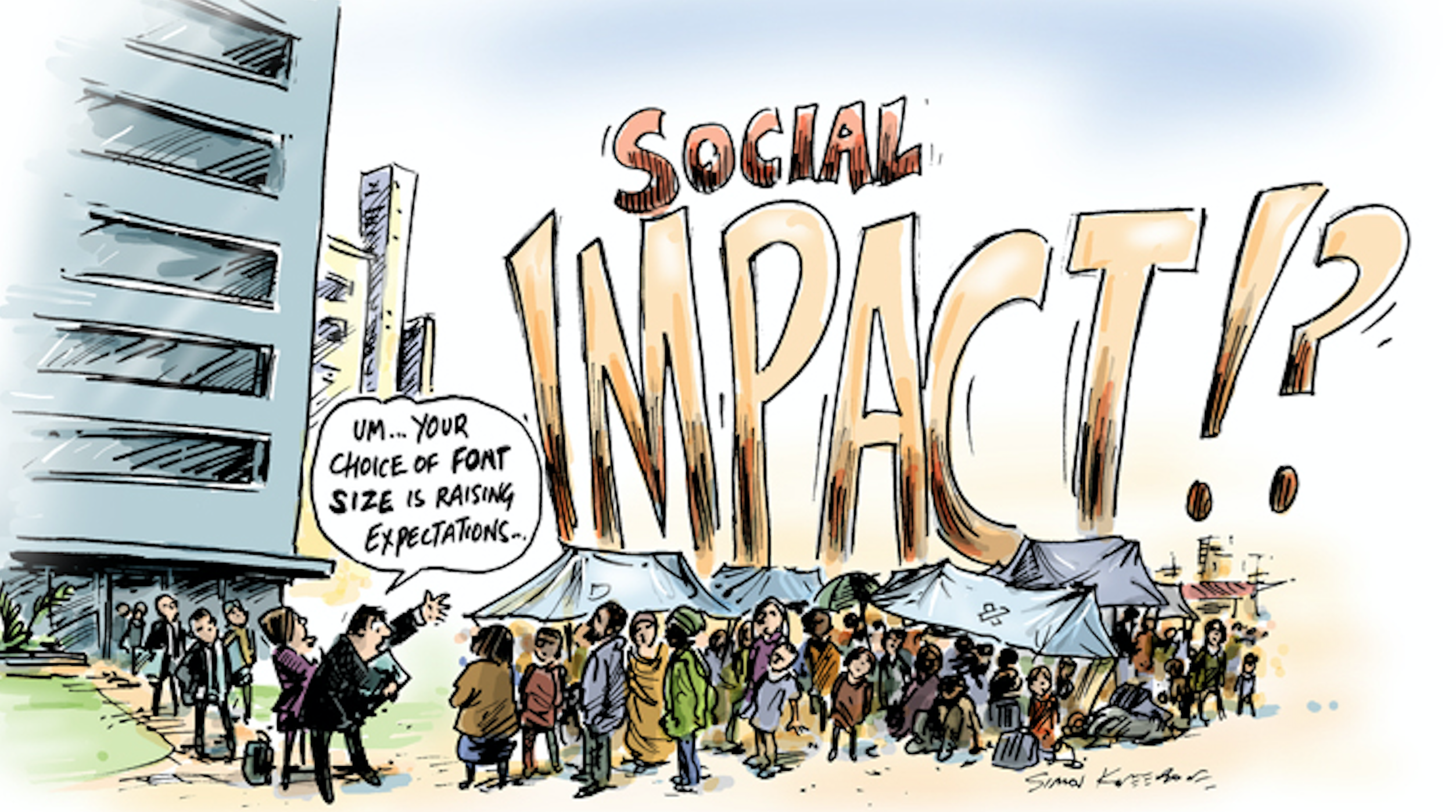
Have you ever heard of Hollywood, Health, & Society? Most likely not.
Yet, you have probably watched something that they have worked on. With over 1,100 aired storylines from 2012-2017 including those for Grey’s Anatomy, NCIS, and black-ish, Hollywood, Health, & Society (HH&S) serves to provide entertainment industry writers with accurate information on storylines related to health, safety, and national security. This pretty much includes everything from aging to nuclear war.
For example, that April 30th, 2017, episode of American Crime that included immigration, opiate abuse, and human trafficking in the plot? Data analysis is currently in progress for a cross-sectional study of viewers.
With the USC Annenberg Norman Lear Center, HH&S not only pairs experts with writers, but also conducts extensive research on their impact and the correlation between seeing things on screen and audiences’ changed perceptions of those topics. HH&S maintains a low public profile, but is very much involved in the writers’ rooms and guilds. Their approach is two-fold:
1) Reactive – responding to requests and needs for HH&S services, which manifests in the form of phone calls and/or emails to the center, expert consultations, guidance on accurate language.
2) Proactive – introducing writers and entertainment professionals to subject matter experts through panel discussions, screenings and immersive events; a quarterly newsletter, tip sheets and impact studies.
Students, you are welcome to use this resource as well! HH&S serves writers at all stages of their careers, although of course, shows on the air or already in production have priority.
To learn more about the research and impact studies behind HH&S:
– Featured list of tip sheets for writers
– CDC’s list of tip sheets from A-Z
– On location trips for writers to gain understanding for certain topics
Follow Hollywood, Health, and Society on Facebook and Twitter to stay updated with their work and upcoming opportunities.
Companies
Social Impact Filmmaking: The How-To

“Social impact entertainment’s time has come,” Teri Schwartz, the dean of UCLA School of Theater, Film, and Television said as she welcomed everyone to the first Skoll Center summit. Nonprofit leaders, social campaign strategists, experts in distribution and funding, and a variety of creators gathered to define social impact entertainment, learn more about storytelling, and discuss new distribution and funding models.
Students and professionals alike joined in the conversation thinking about questions like: Is intention enough? What is the difference between storytelling and advocacy? What are examples of previously successful social impact campaigns and how can we follow those models? In this time of mass streaming platforms, how can artists market their social impact content and demand awareness?
The social impact entertainment field is developing, but very much alive. However, unlike industries that sometimes hide information to maximize self-growth, it is critically important for us to collaborate in this space and build a community of entertainment activists. Cinema of Change sent several to this summit to do exactly that: share what we’ve learned and be honest about what we don’t know yet.
So, what’s the secret sauce? How can films change the world?
Truth is, like the entertainment industry itself, there is not one path to ending climate change or human trafficking through film (unfortunately, I know). However, whether it is documentary, narrative, or docu-fiction, everything begins with storytelling.
-
STORYTELLING
No matter how important the statistics are or how beautiful the production design is, people are not going to watch a film that has no story. Sometimes, that is why a narrative film may even have a larger impact on a social issue than a documentary film because people relate and empathize to the fictional characters more and will walk away with those emotions in mind.
Holly Gordon, Chief Impact Officer of Participant Media: There’s a difference between storytelling and advocacy. Storytelling comes 100% from intention, but also creativity. “Creativity means intention and the ability to tell a story.” And that’s what leads to transformational change, which is long-term and visionary, compared to transactional change.
Hayley Pappas, Head of RYOT: As a reminder, “It doesn’t always have to be heartbreaking to be transformative. You can laugh a lot and see something in a new way.”
Davis Guggenheim, director of An Inconvenient Truth and He Named Me Malala: “Without the intention, you’re not going to do it. It’s too hard.” Documentaries can hit a wall sometimes because everyone working is so passionate about the topic, but when you go into the editing room, there’s no story.
As much as we support documentaries here at Cinema of Change, we also believe that mega blockbusters and social impact are not mutually exclusive. In fact, we wrote an article on exactly why we think the opposite here.
Darnell Strom, Creative Artists Agency: “Story matters. Representation on screen matters and that has a ripple effect.” Sometimes, filmmakers may not set out to have a specific intention, yet organic social issue campaigns arise from a great story. Take Black Panther for example. Disney probably did not set out to create a transformative piece about black culture through a Marvel comic book story, but the film had a majority black cast and depicted a woman leading the technological developments. Now, nonprofits are jumping up about women in STEM and young black boys and girls can watch the film and be like, Hey, if someone who looks like me can do it, so can I.
-
MEASURING SOCIAL IMPACT
Great, this film tells an incredible story about a disadvantaged youth rising from poverty and attending a prestigious university, but how do we measure the social impact? In other terms, how do we calculate the number of minds changed, or decisions made to take action? Even Gordon agreed that transformational change is very hard to measure, but it can be done.
Holly Gordon: For Girls Rising, which is both a film and nonprofit about the importance of educating young girls, measurement meant hiring Mission Management to analyze impact in three ways: changed minds (reach), changed lives (money raised), and changed policy (shifts in government policy). Gordon worked on relationship building with a number of nonprofits and even leaders like Michelle Obama to develop impact partnerships and shape campaigns around the themes in the documentary, before a single frame was even shot.
Rory Kennedy, director of Last Days in Vietnam and Ghosts of Abu Ghraib: Social impact is often thought of in large numbers: raising millions of dollars, changing thousands of lives, but it is also just as important on an individual level. For example, in Last Days in Vietnam, Stuart Herrington, a counterintelligence officer in the Vietnam War, was responsible for safely evacuating American soldiers at end of the war, but he knowingly left 422 Vietnamese soldiers there despite promising them safety. At the premiere of the documentary, Harrington reflected on his guilt and regret for leaving all those lives behind and said that he dreaded ever meeting one of the 422. Sure enough, one of the Vietnamese soldiers Harrington left walked up on stage and told him, “I forgive you.” That moment left both of the men in tears and it may not have changed a hundred lives, but it changed two.
-
IMPORTANCE OF SOCIAL IMPACT CAMPAIGNS
When a film wraps, the awareness and campaign work most definitely does not. Social impact campaigns are critical to accelerating awareness and creating a sustainable, lasting effect. They’re arguably more effective when launched before the film even begins production.
Bonnie Abaunza, founder of The Abaunza Group which has launched campaigns for The Hunting Ground, Hotel Rwanda, Cries from Syria: These impact campaigns are designed to intersect all industries and companies. Impact comes from educating students, mobilizing ambassadors, challenging companies, and partnering with nonprofits and policy leaders who care. One example of a highly successful social impact campaign is the one for Blood Diamond. Lena Khan, the director of The Tiger Hunter, even told Abaunza that she has a conflict-free diamond on her hand because of the film. Jewelry companies like Tiffany & Co. joined the movement by labelling their diamonds as “conflict-free” especially because more and more people started asking about it. Amnesty International created an entire curriculum to introduce the issue to students.
Ted Richane, Vulcan Productions Impact and Engagement: At the end of the day, “We can have our strategies, but the best thing we can do is listen. The community is awesome and going to be inspired and go to take the issue upon themselves.” That’s the ultimate goal, right? Launch the campaign, tell the story, and empower others to share and do something about it all.
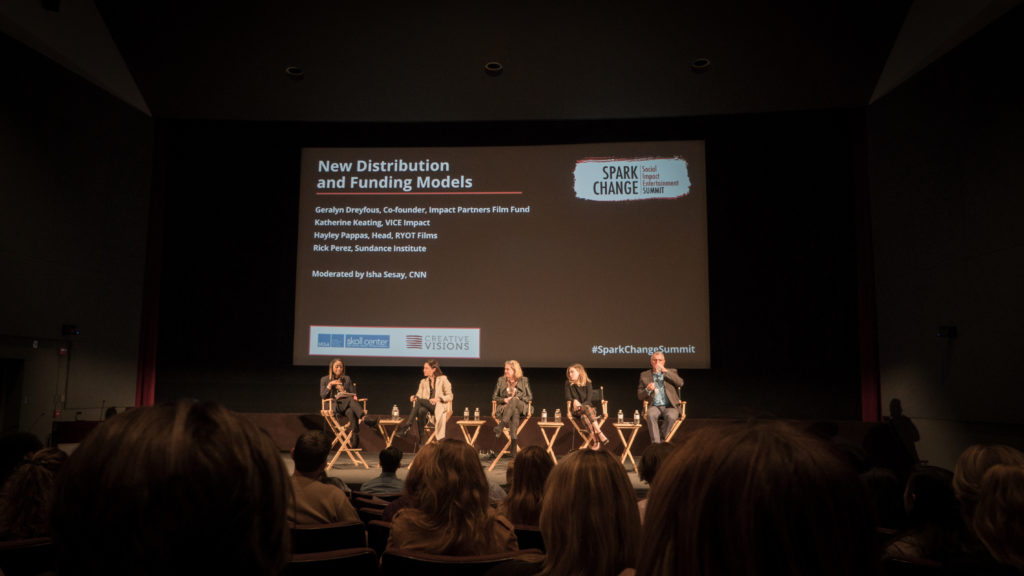
-
DISTRIBUTING AND FUNDING SOCIAL IMPACT FILMS
The world of distribution and funding can be quite daunting to enter, because no matter how passionate someone is, it is always difficult to get the money needed to transform passion into action. Major companies are also a huge part of the conversation. How do they decide what films to green light? How can indie artists break out with both an entertaining film and one that creates change?
Geralyn Dreyfous, Co-founder of Impact Partners Film Fund: There is a shift nowadays in the distribution world. Only two films sold at Sundance this year. Netflix is commissioning their own content. Companies are not paying their creators enough, especially for short form content. To the artists: “You love it so much, you’d do it for free. But you have to stop doing it for free.” When starting out with trying to find investors, you can always pitch to the Impact Partners Film Fund, but if you’re not successful there, think about incentives and break up your budget into smaller chunks for financing. Can you give donors credits, on screen thanks, private screenings, and other benefits? “Mostly, founders are interested in amplifying and aligning your content with their philanthropic goals. They need to know that you’re the person to tell that story.”
Katherine Keating, Vice Impact: With a cross-platform company like Vice, it’s very important to think about who the audience is and where they are consuming their content. Some things are meant to be a series of five 1-minute shorts on Facebook, even though the artist may have pitched it as five 1-hour series. Another way to integrate the impact campaign is through brand partnership with large, respected companies. For example, Colgate, one of the biggest toothpaste sellers, is now promoting water conservation and looking at ways to reduce plastic use in their packaging. Companies are starting to recognize the importance of social impact and it’s our job as their commercial creators to push them in that direction.
Cinema of Change previously interviewed entertainment attorney Mark Litwak about the “Filmmaking Pitfalls in Deal-Making and Distribution”; read what Litwak has to say here.
NOW WHAT?
“To create in this chaotic world peace, to seek in this gathering darkness light, to transform the hatred into a new kind of loving. Together, we can transform this world. It’s going to be really hard. But we can do it, and it will be through storytelling and courageous people like you.” (Kathy Eldon, Co-founder of Creative Visions). With that, the SPARK CHANGE Social Impact Entertainment Summit came to end, but our work is just beginning.
As audiences, we have to demand for content that does not further marginalize communities and perpetuate stereotypes.
As companies, we cannot stay silent to the injustices in our world in order to protect our brand.
As filmmakers, we are not just producing beautiful, cinematic pieces. We have the responsibility to use those creations to spark change.
—
List of all organizations in attendance: Cause Cinema, CNN, Creative Activists Network, Creative Artists Agency, Creative Visions (co-host), Google, I am Jane Doe, Impact Partners Film Fund, Living on One, Majority Film, Participant Media (sponsor), President’s Committee on Arts and Humanities, RYOT, Skoll Center (co-host), Sundance Institute, The Abaunza Group, Vice, Vulcan Productions (sponsor) UCLA School of Theater Film Television
*Sayings in quotation marks are directly quoted. Other remarks are paraphrased.
Academia
Filmmaking Pitfalls in Deal-Making and Distribution
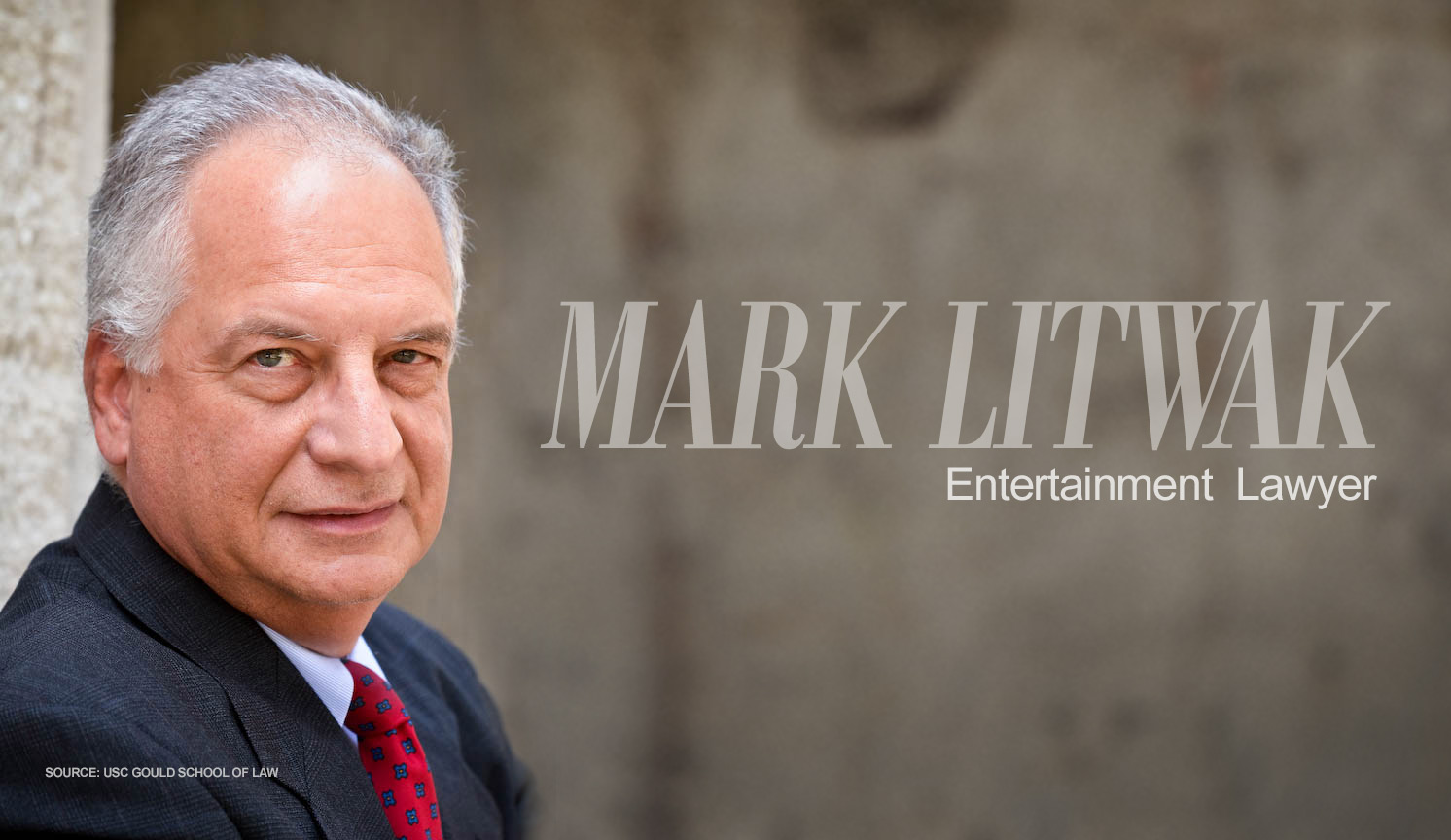
Welcome to the Cinema of Change podcast with Tobias Deml and Robert Rippberger. Cinema of Change is a magazine and community that challenges the conventions of film and its ability to effect change in the world. This episode is an interview with entertainment attorney Mark Litwak called, “Filmmaking Pitfalls in Deal-Making and Distribution.”
Mark Litwak is a veteran entertainment attorney. As a Producer’s Representative, he assists filmmakers in arranging financing, marketing and distribution of their films. Litwak has packaged movie projects and served as executive producer on such feature films as “The Proposal,” “Out Of Line,” “Pressure,” and “Diamond Dog.” He has provided legal services or worked as a producer rep on more than 200 feature films.
Litwak’s significance can be see in Disney’s Wreck it Ralph – where the filmmakers decided to name the owner of the arcade which encapsulates the entire plot, “Mr. Litwak”.
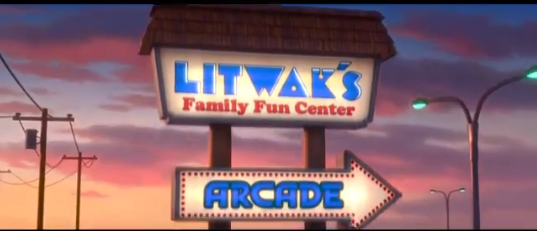
Content of this Episode:
- 0:22 – Introduction
- 1:33 – After learning filmmaking, what business pitfalls are common for young filmmakers?
- 5:15 – How is the Film Industry like the Wild West – creatively and in dealmaking?
- 9:11 – How can first-time filmmakers survive the Sharks in Sales and Distribution?
- 12:10 – Reporting the Bad Players: What was your Litwak Filmmakers’ Clearinghouse?
- 15:53 – CAM (Collection Account Management) – how do they help with accountability and fairness for the filmmaker?
- 19:52 – What happened to the Filmmaker’s Clearinghouse?
- 20:40 – Even Ethical Distributors will be out for their own best interest – is that true?
- 22:20 – What criteria do you base your client selection on? What homework should a filmmaker bring to a lawyer?
- 26:44 – How is New Media influencing the market and distribution?
- 34:38 – Can Indie Distribution even compete anymore with vertically integrated SVOD platforms like Hulu and Netflix?
- 39:03 – What progress can be made in the Filmmaker > Sales Agent > Distributor workflow?
- 42:44 – How can a producer put their best foot forward towards a lawyer?
- 45:50 – How can a filmmaker prepare for working with an Entertainment Lawyer?
- 46:46 – What resources exist in the film industry that even the playing field of sales and distribution a bit in favor of the independent filmmaker?
Litwak is also the author of six books: Reel Power, The Struggle for Influence and Success in the New Hollywood (William Morrow, 1986), Courtroom Crusaders (William Morrow, 1989), Dealmaking in the Film & Television Industry (Silman-James Press, 1994) (winner of the 1996 Kraszna-Krausz award for best book in the world on the film business), Contracts for the Film & Television Industry (Silman-James Press, 3rd Ed. 2012), Litwak’s Multimedia Producer’s Handbook (Silman-James Press, 1998), and Risky Business: Financing and Distributing Independent Film (Silman-James Press, 2004).
He is an adjunct professor at the U.S.C. Gould School of Law where he teaches entertainment law.
Litwak has a B.A. and M.A. degrees from Queens College of the City University of New York. He received his J.D. degree from the University of San Diego in 1977.
We hope you find this conversation interesting and insightful. Subscribe to make sure you don’t miss an episode. Until next time, be the change that you want to see in the world. Then turn it into cinema.
-

 SIE Magazine9 years ago
SIE Magazine9 years agoWhat Makes A Masterpiece and Blockbuster Work?
-
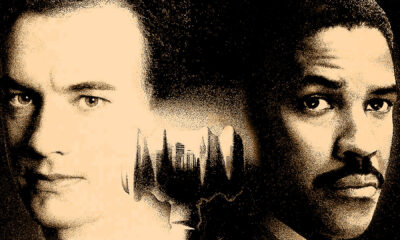
 Filmmakers9 years ago
Filmmakers9 years agoFilms That Changed The World: Philadelphia (1993)
-

 Companies6 years ago
Companies6 years agoSocial Impact Filmmaking: The How-To
-
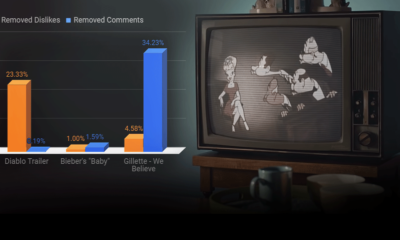
 Media Impact5 years ago
Media Impact5 years agoCan We Believe The Gillette Ad?
-
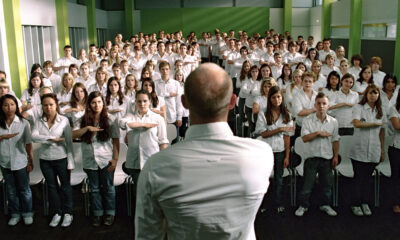
 SIE Magazine9 years ago
SIE Magazine9 years agoDie Welle and Lesson Plan: A Story Told Two Ways
-

 Academia8 years ago
Academia8 years agoFilmmaking Pitfalls in Deal-Making and Distribution
-
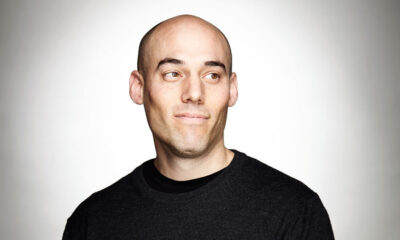
 Academia8 years ago
Academia8 years agoJoshua Oppenheimer: Why Filmmakers Shouldn’t Chase Impact
-

 Filmmakers9 years ago
Filmmakers9 years agoStephen Hawking vs The Elephant Man

